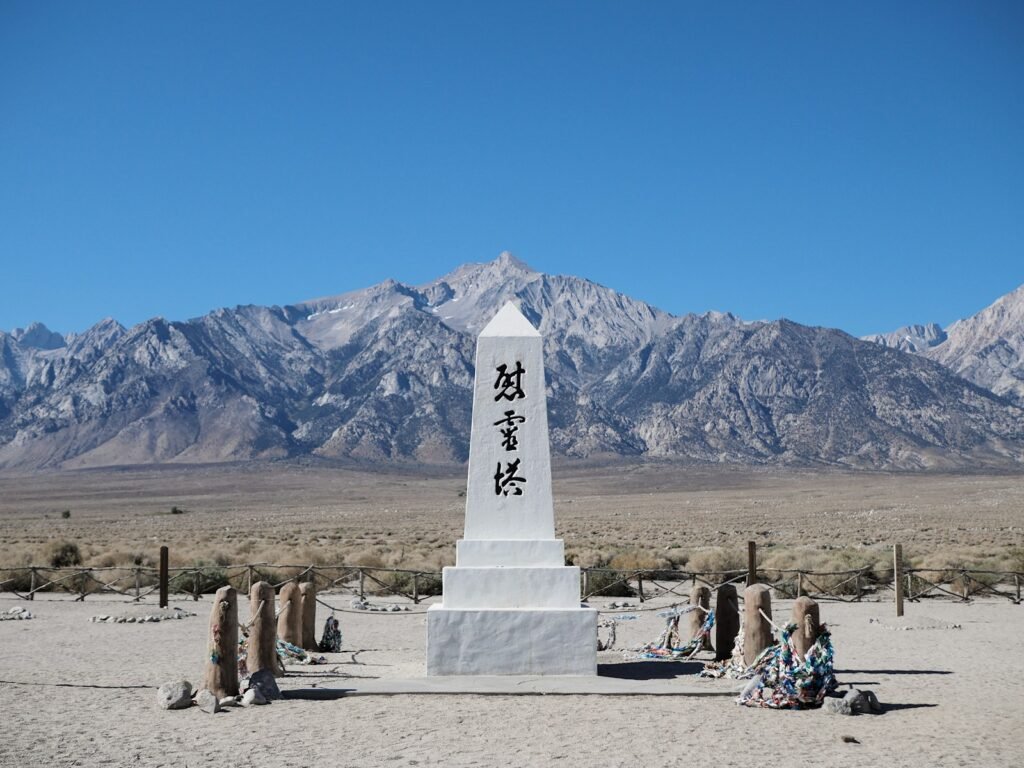Imagine waking up one morning to find your entire life turned upside down—not because of anything you did, but simply because of your ancestry. For over 10,000 Japanese Americans, this nightmare became a reality at Manzanar, a name that still echoes with pain, resilience, and the struggle for dignity. Yet, incredibly, most Americans barely hear a whisper about Manzanar in their textbooks. The story of this American concentration camp is both shocking and essential, revealing uncomfortable truths about fear, prejudice, and the meaning of justice in the United States.
The Landscape of Manzanar: A Stark Beauty with a Dark History
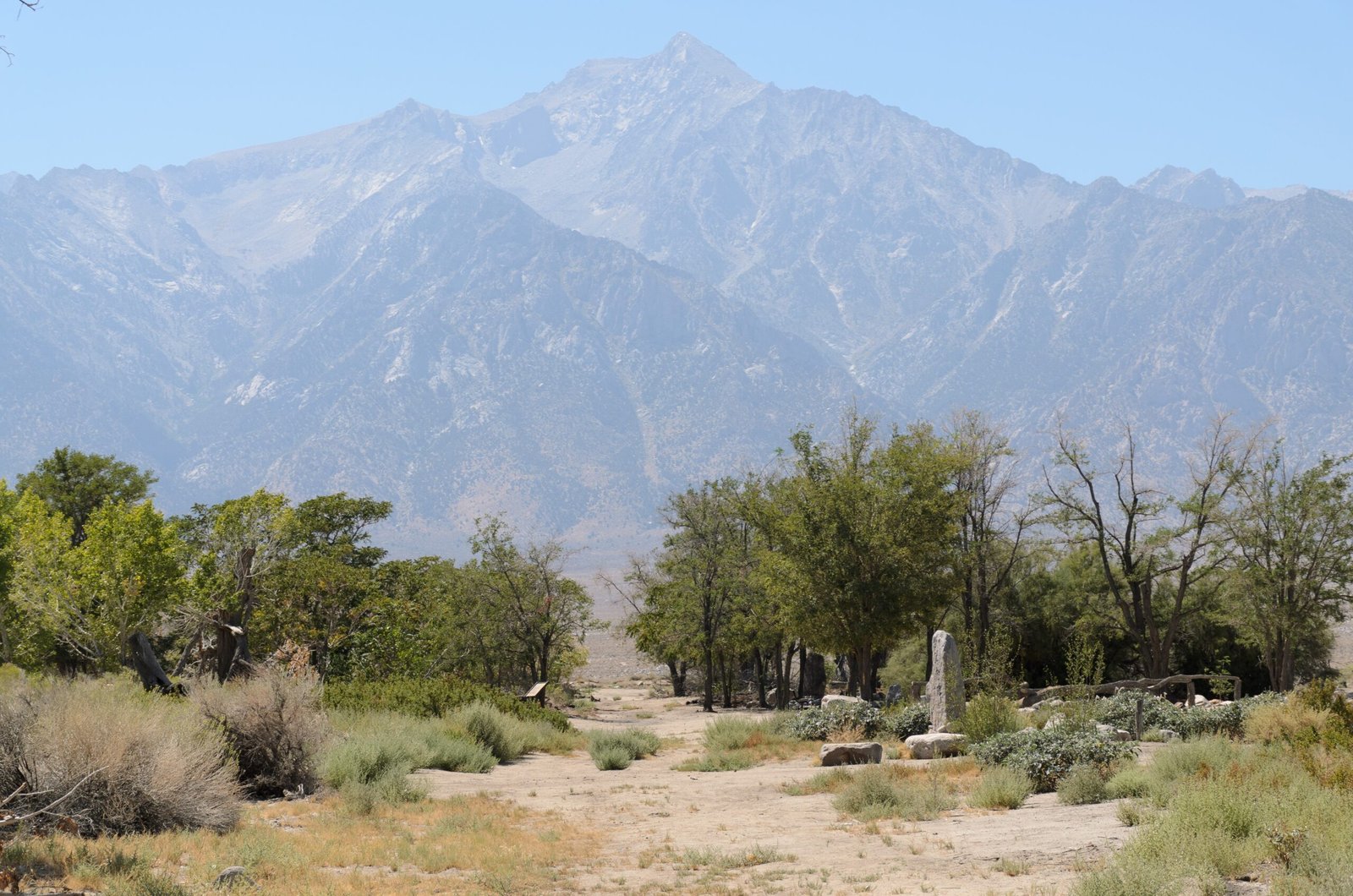
Manzanar sits in the shadow of the majestic Sierra Nevada mountains, a place where the natural beauty of the Owens Valley starkly contrasts with its somber past. The camp’s surroundings—arid, windswept, and often unforgiving—mirror the harshness of life inside its barbed wire fences. Sagebrush dotted the dusty ground, and the air was often filled with swirling sand, making daily existence uncomfortable. The isolation of Manzanar was both physical and emotional, separating its inhabitants from the lives they once knew. Despite the breathtaking views of snow-capped peaks, the camp was a harsh reminder that even beautiful places can harbor dark secrets. Many internees later described the landscape as both prison and sanctuary, haunted by memories of loss and resilience. To this day, visitors feel a strange mix of awe and sorrow when walking through this historic site.
Why Manzanar Was Created: Fear, Prejudice, and Wartime Hysteria
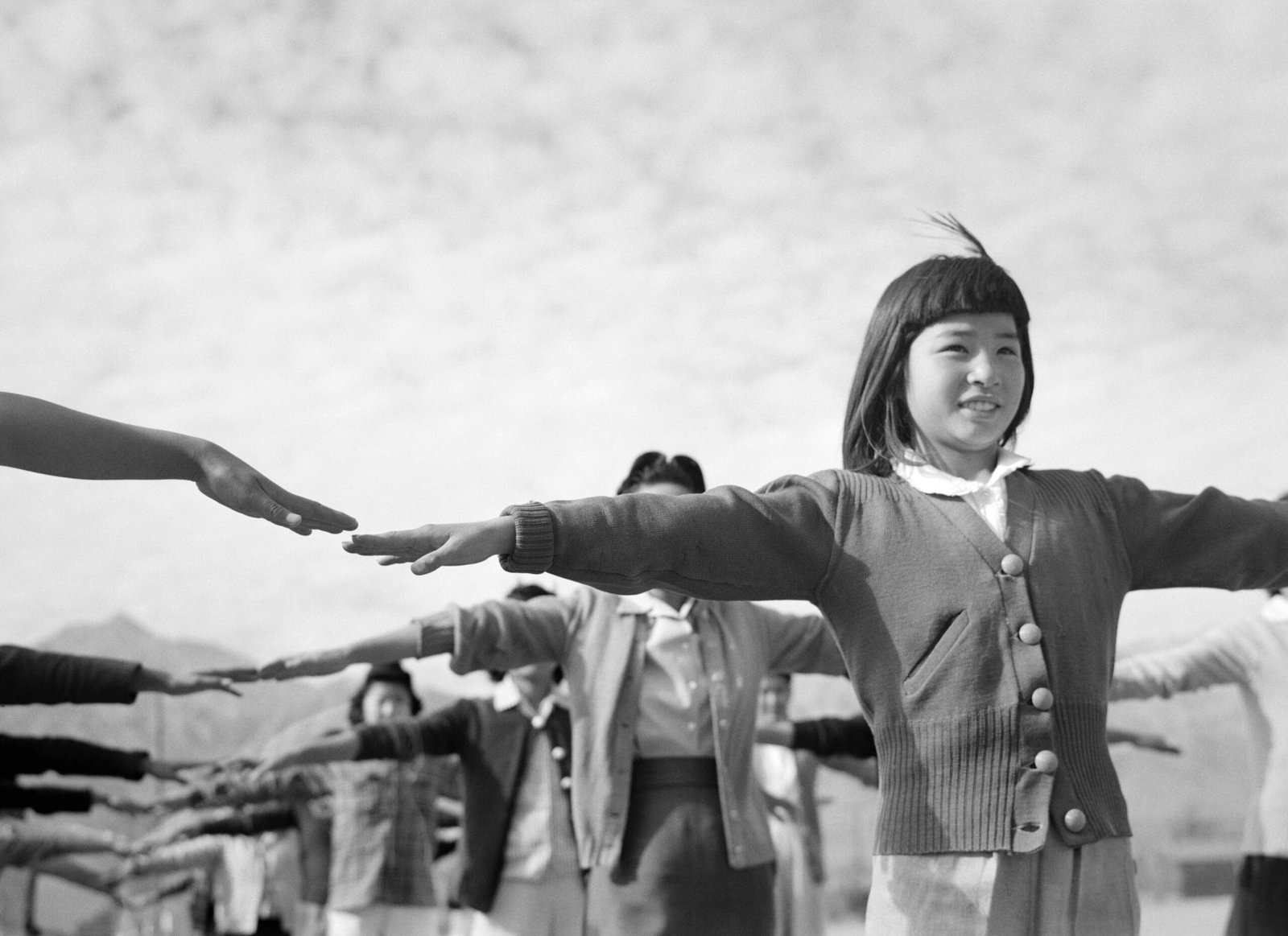
The attack on Pearl Harbor in December 1941 shattered America’s sense of security and unleashed a wave of suspicion toward Japanese Americans. Overnight, thousands of families were viewed as potential enemies, regardless of their citizenship or loyalty. President Franklin D. Roosevelt’s Executive Order 9066 authorized the forced relocation and incarceration of over 110,000 people of Japanese ancestry, most of whom were U.S. citizens. Manzanar was one of the first ten “relocation centers” hastily established in remote areas across the West. The official reason was national security, but history has revealed that racism and wartime hysteria played a far larger role than any real evidence of disloyalty. This collective punishment tore families from their homes, businesses, and communities, leaving deep scars that would last for generations. The creation of Manzanar stands as a cautionary tale about what can happen when fear overrides justice and compassion.
Life Behind Barbed Wire: Daily Realities of the Incarcerated
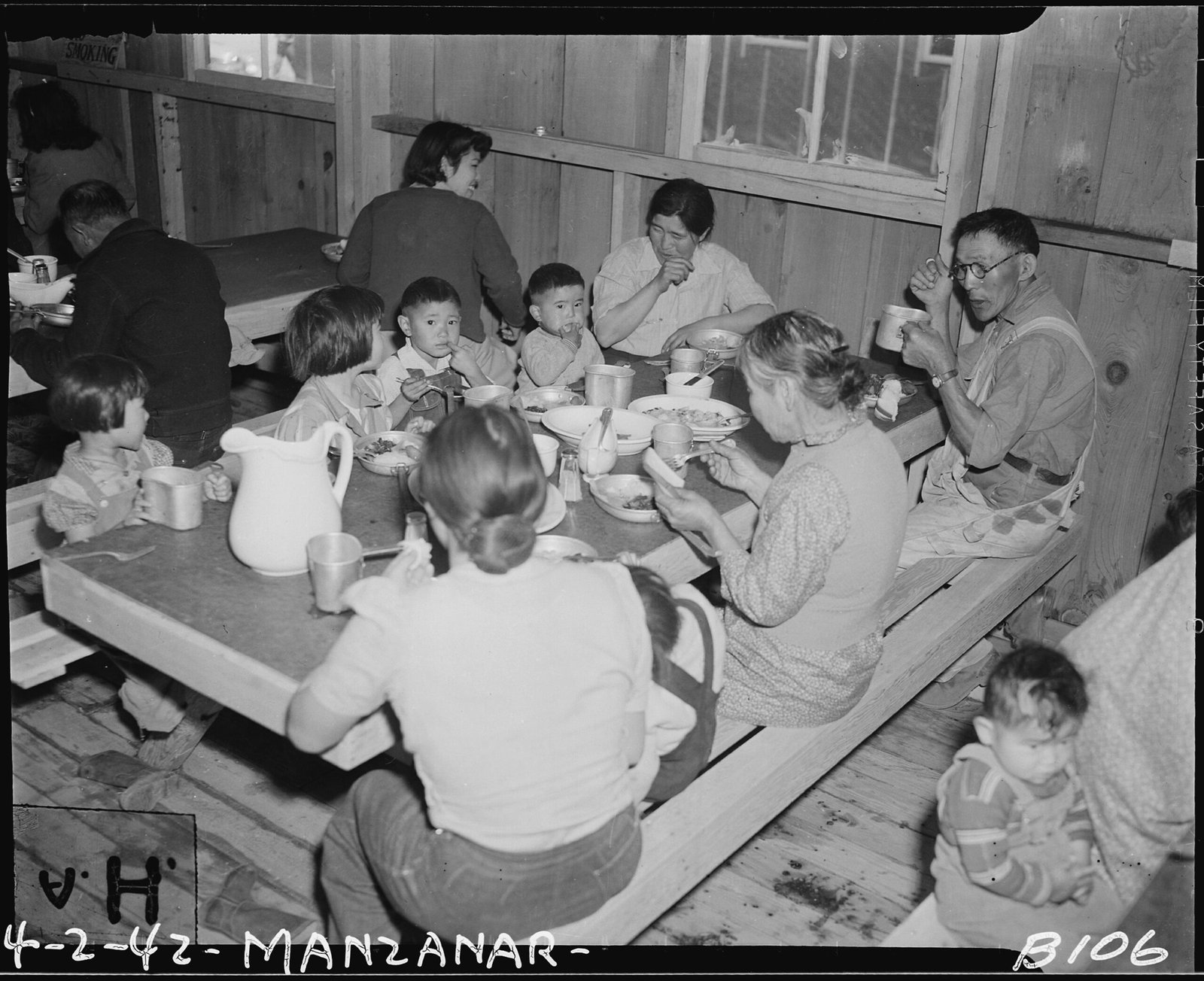
Inside Manzanar’s fences, daily life was defined by uncertainty, discomfort, and the constant presence of armed guards. Families were crowded into flimsy barracks without insulation, forced to endure extreme heat in summer and freezing cold in winter. Privacy was almost nonexistent; even bathrooms and showers were communal, stripping away basic dignity. Meals were served in mess halls, where food was often bland and unfamiliar, adding to the sense of loss and displacement. Children attended makeshift schools while adults struggled to find ways to maintain routines and purpose. Despite the hardship, people formed tight-knit communities, organizing sports, dances, and cultural events to reclaim a sense of normalcy. The resilience and adaptability of those imprisoned at Manzanar remains one of the most inspiring aspects of its history.
The Science of Survival: Adapting to an Unforgiving Environment
Surviving in Manzanar required more than emotional strength—it demanded practical adaptation to a harsh environment. The barren soil made it difficult to grow food, yet many internees, skilled in agriculture, transformed the land with gardens and small farms. They built windbreaks out of scrap wood to shield themselves from the relentless dust storms, and improvised clothing to cope with temperature extremes. Scientists and engineers among the internees helped design irrigation systems that brought water to vegetable plots, turning adversity into innovation. Even children learned how to cope with the unforgiving climate, becoming experts at finding shade or using damp cloths to cool down. These acts of ingenuity were not just about survival—they were powerful statements of agency and self-worth, even in captivity.
Community and Culture: Holding Onto Identity

Despite the efforts to erase their sense of belonging, Japanese Americans at Manzanar clung fiercely to their cultural identity. Traditional ceremonies, art, music, and language became lifelines, helping people stay connected to their roots. Buddhist and Christian services were held regularly, offering spiritual comfort in times of despair. Talented artists painted murals, crafted furniture from scavenged materials, and wrote poetry reflecting their experiences. Sports teams, newspapers, and theater groups flourished, fostering a sense of community and resilience. Even the act of sharing recipes and preparing Japanese dishes became a quiet act of resistance, reminding everyone who they were before the barbed wire. This commitment to culture helped many endure the psychological toll of incarceration.
Youth in Manzanar: Growing Up Behind Fences
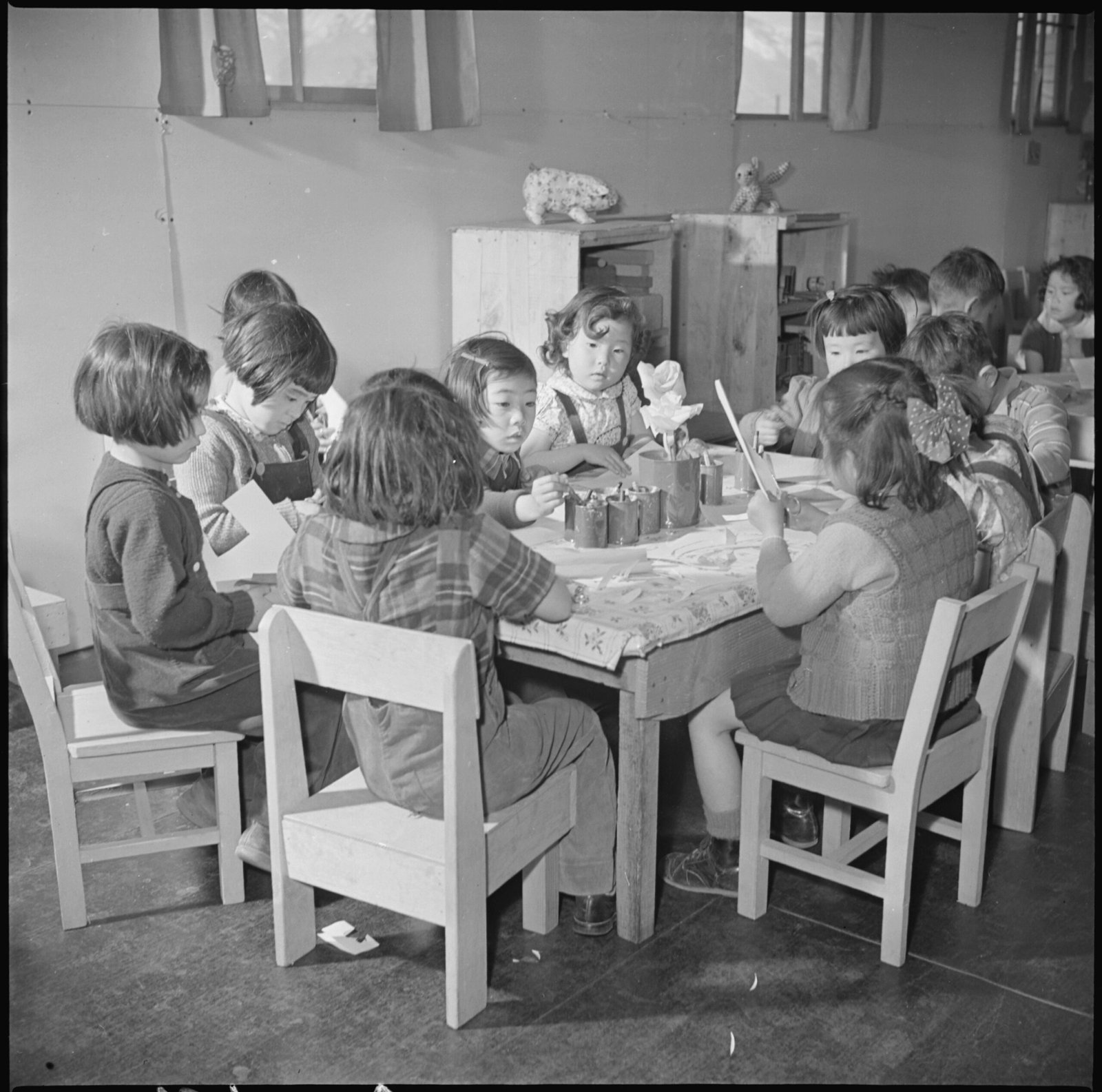
For the children and teenagers of Manzanar, life was a strange mix of fear, boredom, and unexpected friendships. Instead of playing in their old neighborhoods, they found themselves inventing games on dusty lots or joining impromptu baseball leagues within the camp. Makeshift classrooms provided some sense of normalcy, but students often struggled with overcrowded conditions and a shortage of supplies. Graduation ceremonies were both joyous and heartbreaking, as young people marked milestones in confinement. Many youth wrote diaries or drew pictures to process their experiences. The friendships formed under these unusual circumstances ran deep, shaped by the shared challenge of growing up in captivity. These young people carried the lessons and scars of Manzanar with them long after the gates finally opened.
Resistance and Protest: Voices That Would Not Be Silenced
Life in Manzanar was not marked by passive acceptance—many internees fought back against injustice in whatever ways they could. Some challenged the loyalty questionnaires that sought to divide the community, while others organized protests against camp conditions or unfair treatment. In December 1942, tensions boiled over into the “Manzanar Riot,” a protest sparked by anger over food shortages, rumors, and the arrest of a popular community leader. The authorities responded with tear gas and gunfire, resulting in injuries and the deaths of two internees. These acts of resistance, big and small, showed that people were determined to assert their rights, even when the odds seemed insurmountable. Their courage paved the way for later generations to demand justice and recognition.
Ecological Impact: Nature’s Recovery and Reminders
The construction and operation of Manzanar left lasting marks on the local environment. Native plants were cleared to make way for barracks and roads, and water was diverted from nearby streams to support the camp’s needs. Over time, the natural landscape has slowly begun to recover, with sagebrush and wildflowers reclaiming abandoned spaces. Today, the site is a powerful example of how nature can heal, even after human disruption. Scientists and volunteers work together to restore habitats and preserve the history embedded in the land. The return of native wildlife stands as a testament to resilience—both human and ecological. Manzanar’s landscape serves as a living reminder of the complex interplay between people and their environment.
Remembering and Teaching: Manzanar’s Place in American Memory
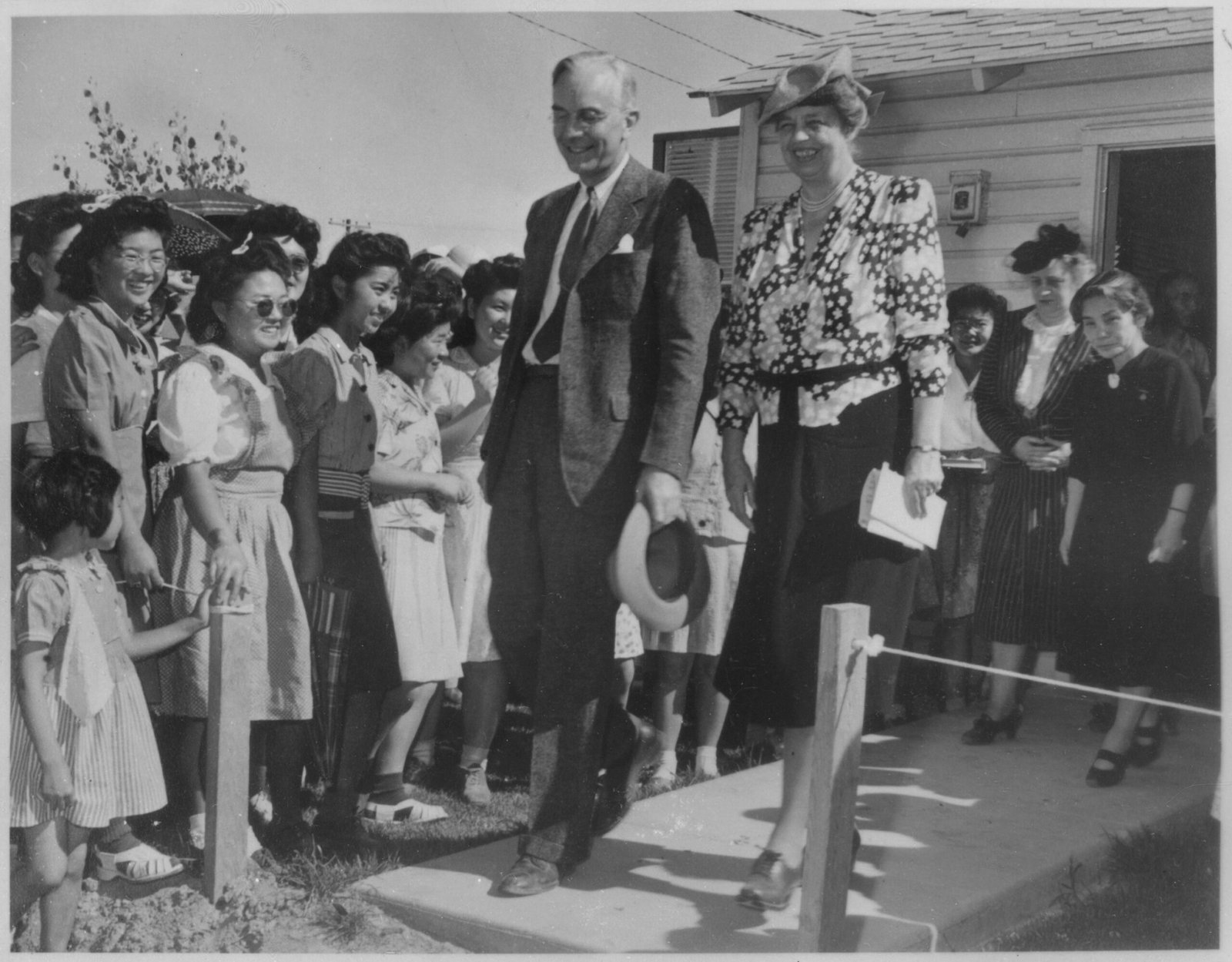
For decades, the story of Manzanar was pushed to the margins of American history, barely mentioned in classrooms or public discourse. Survivors and their families fought tirelessly to preserve the camp as a historical site, believing that remembering was the only way to prevent such injustices from happening again. In 1992, Manzanar was designated a National Historic Site, drawing visitors from around the world who come to learn, reflect, and pay tribute. Educational programs, exhibits, and annual pilgrimages keep the memory of Manzanar alive, challenging new generations to confront uncomfortable truths about the nation’s past. The site’s preservation is a testament to the power of collective memory and the importance of teaching history that is honest, inclusive, and unafraid to confront its darkest chapters.
The Science of Memory: Why We Must Not Forget
Psychologists and neuroscientists agree that collective memory shapes not just how we understand the past, but how we behave in the present and future. Forgetting or ignoring painful chapters like Manzanar risks repeating the mistakes of history. Studies show that teaching about injustices—no matter how uncomfortable—helps build empathy and strengthens social bonds. Memorials and museums serve as “cognitive anchors,” helping societies learn from their failures. Manzanar is more than just a physical location; it is a living lesson in the dangers of prejudice, fear, and unchecked power. By studying and sharing its story, we build a more compassionate and informed society. The science of memory reminds us that remembrance is an act of hope, not just a duty.
Legacy and Reflection: Lessons from Manzanar Today
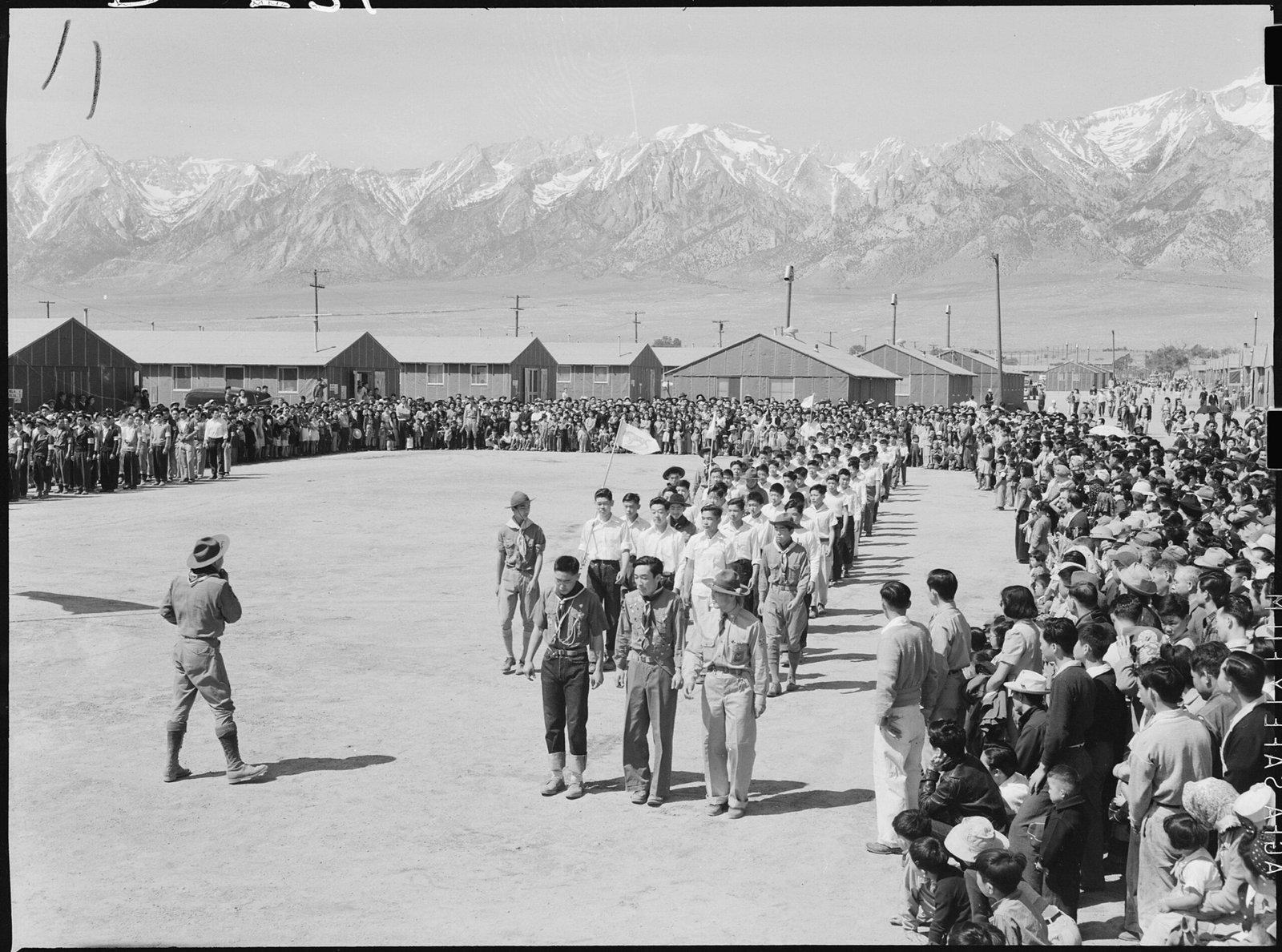
The echoes of Manzanar reach far beyond the fences that once confined its inhabitants. Its lessons are painfully relevant in today’s world, where questions of justice, belonging, and civil rights remain urgent. Manzanar teaches us that democracy is fragile and must be protected by vigilance, empathy, and the courage to speak out against injustice. Survivors and descendants have become powerful advocates for civil liberties, ensuring that their stories shape public policy and education. The camp’s history inspires ongoing conversations about immigration, racial profiling, and what it means to be truly free. Manzanar’s enduring legacy is a call to remember, reflect, and act with compassion.

